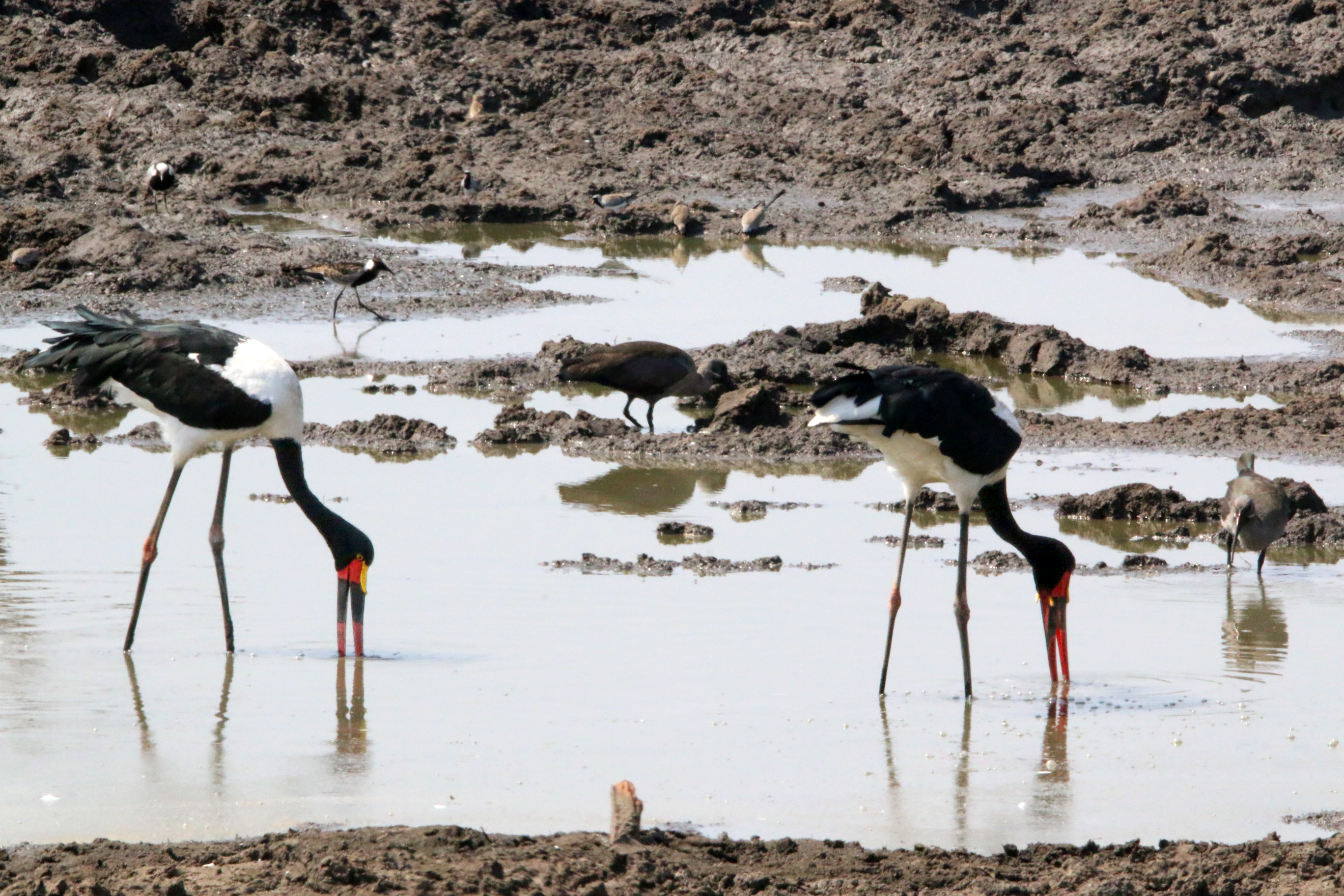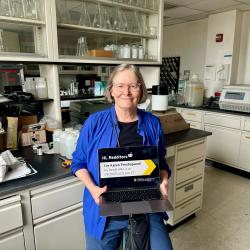Spinosaurus Was More Heron than Crocodile
Study sheds new light on the behavior of the giant carnivorous dinosaur Spinosaurus, suggesting it was a wading hunter
New research from the University of Maryland and Queen Mary University of London reignites the debate around the behavior of the giant dinosaur Spinosaurus. Since its discovery in 1915, the biology and behavior of the enormous Spinosaurus has puzzled palaeontologists worldwide. A research paper in the April 29, 2020, issue of the journal Nature argued that Spinosaurus was largely an aquatic predator, using its large tail to swim and actively pursue fish in the water.
The new study challenges this view, suggesting that although Spinosaurus likely fed from the water and may have been a swimmer, it wasn’t well adapted to the life of an aquatic pursuit predator. Instead, the study suggests Spinosaurus was like a giant, flightless heron or stork that snatched at fish from the shoreline and hunted other small available prey on land or in water. The new study was published on January 26, 2021, in the journal Palaeontologia Electronica.
Spinosaurus lived in the late Cretaceous period, from 99 to 93 million years ago. At 40 to 60 feet long, it was among the largest of all known carnivorous dinosaurs, and its distinctive vertebrae suggest it had a large sail-like feature on its back.
The researchers compared the features of Spinosaurus with the skulls and skeletons of other dinosaurs and various living and extinct reptiles that inhabited land, water or both. They found several pieces of evidence that contradicted the aquatic pursuit predator concept but none contradicting the wading heronlike model. In addition, various lines of evidence actively supported the wading model.
“Spinosaurus was a bizarre animal, even by dinosaur standards, and unlike anything alive today,” said Thomas Holtz, a principal lecturer in UMD’s Department of Geology and co-author of the paper. “Trying to understand its ecology will always be difficult. We sought to use what evidence we have to best approximate its way of life. And what we found did not match the attributes one would expect in an aquatic pursuit predator in the manner of an otter, sea lion, or short-necked plesiosaur.”
One of the key pieces of evidence unearthed by the researchers related to the dinosaur’s ability to swim. Spinosaurus was already shown to be a less-efficient swimmer than a crocodile, but the study found it also had fewer tail muscles than a crocodile, and due to its size would have had a lot more drag in the water
“Crocodiles are excellent in water compared to land animals but are not that specialised for aquatic life and are not able to actively chase after fish,” said David Hone, senior lecturer at Queen Mary University and lead author of the study. “If Spinosaurus had fewer muscles on the tail, less efficiency and more drag then it’s hard to see how these dinosaurs could be chasing fish in a way that crocodiles cannot.
According to the researchers, the evidence points to Spinosaurus feeding partly, or mostly, in the water, but that does not mean it hunted while swimming.
“Some recent studies have suggested that it was actively chasing fish in water, but while they could swim, they would not have been fast or efficient enough to do this effectively,” Hone said. “Our findings suggest that the wading idea is much better supported, even if it is slightly less exciting.”
Originally found in Egypt, Spinosaurus is thought to be one of the largest carnivorous dinosaurs to exist, possibly reaching over 15 meters in length. The first known Spinosaurus fossils were destroyed by Allied bombing during World War II, which has hampered palaeontologists’ attempts to understand these unusual creatures. More recently, the dinosaur found fame in the 2001 film, “Jurassic Park III,” where it battled and defeated a Tyrannosaurus rex.
“There is still much to be discovered about Spinosaurus,” Holtz said. “But regardless, it remains clear that the ecology of Spinosaurus was distinctly different from most other carnivorous dinosaurs.”
###
This story was adapted from text provided by Queen Mary University of London.
The research paper, “Evaluating the ecology of Spinosaurus: Shoreline generalist or aquatic pursuit specialist?” David W.E. Hone and Thomas R. Holtz, Jr. was published in the January 2021 issue of Palaeontologia Electronica.
Writer: Kimbra Cutlip
Media Relations Contact: Abby Robinson, 301-405-5845, abbyr@umd.edu
University of Maryland
College of Computer, Mathematical, and Natural Sciences
2300 Symons Hall
College Park, Md. 20742
www.cmns.umd.edu
@UMDscience
About the College of Computer, Mathematical, and Natural Sciences
The College of Computer, Mathematical, and Natural Sciences at the University of Maryland educates more than 9,000 future scientific leaders in its undergraduate and graduate programs each year. The college's 10 departments and more than a dozen interdisciplinary research centers foster scientific discovery with annual sponsored research funding exceeding $200 million.









